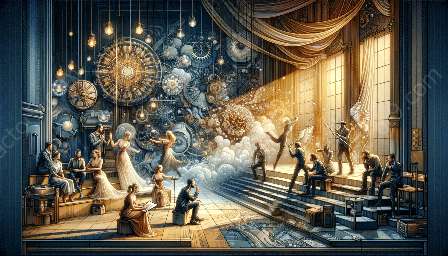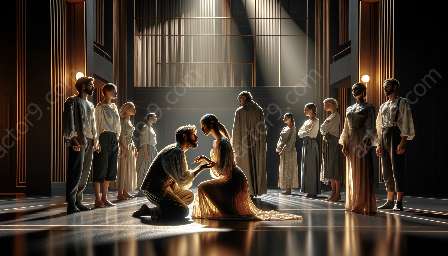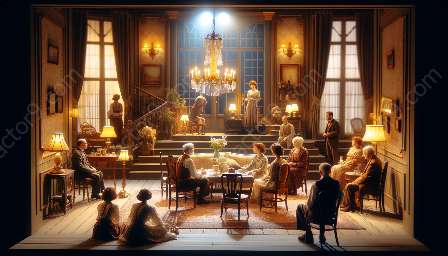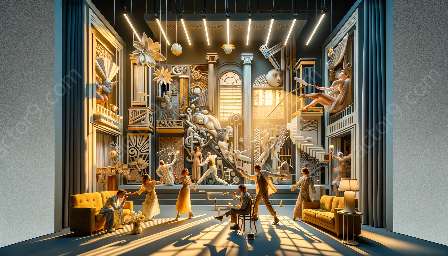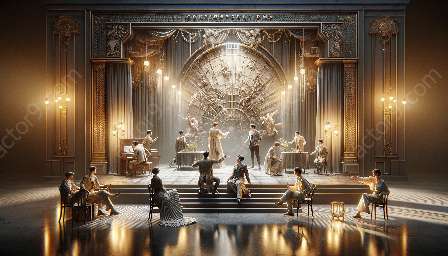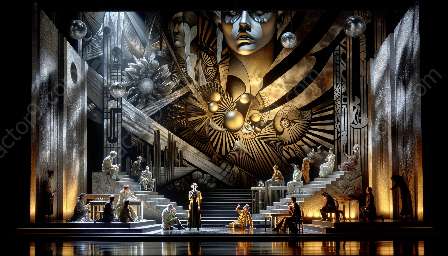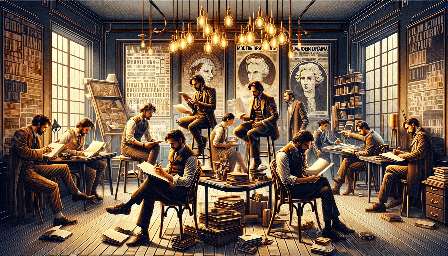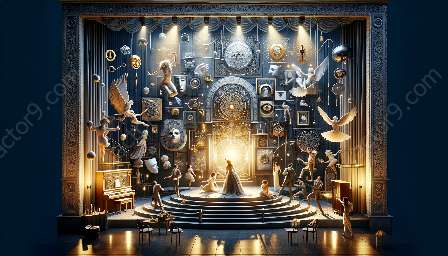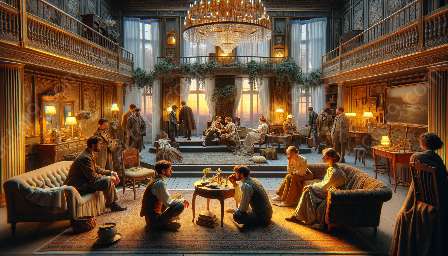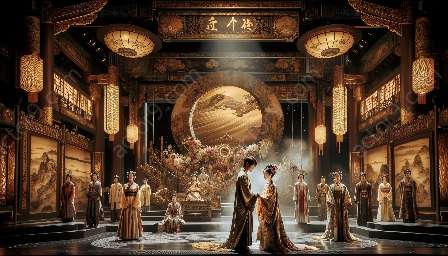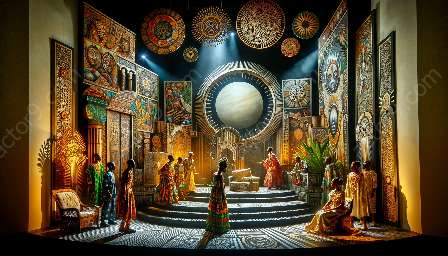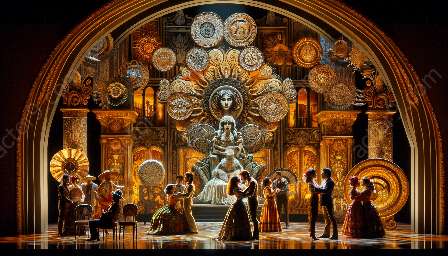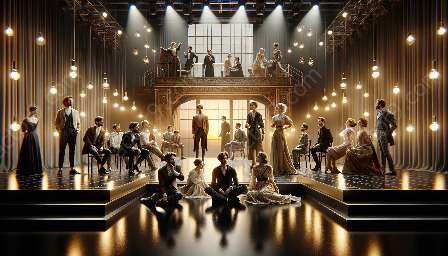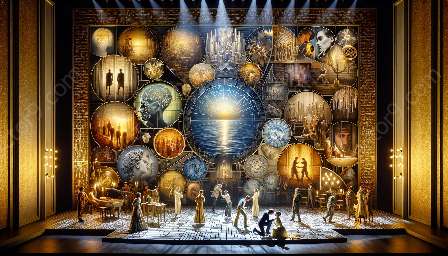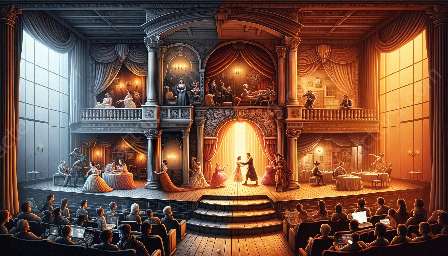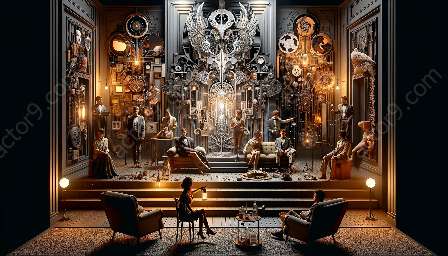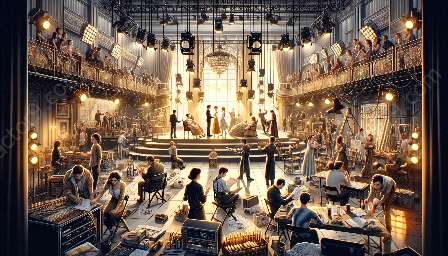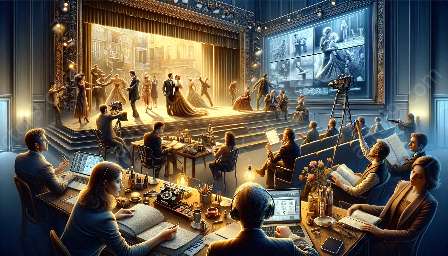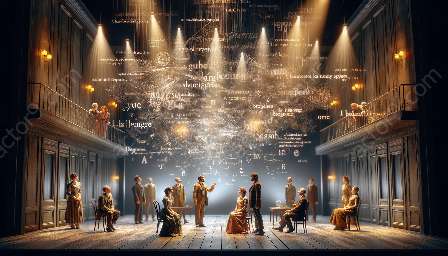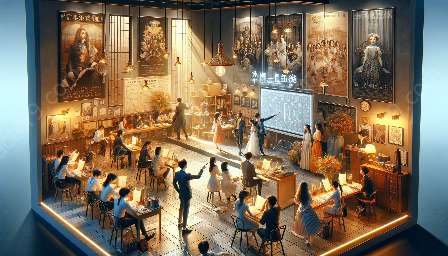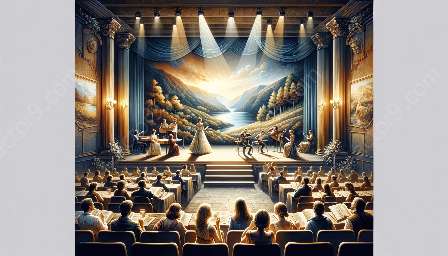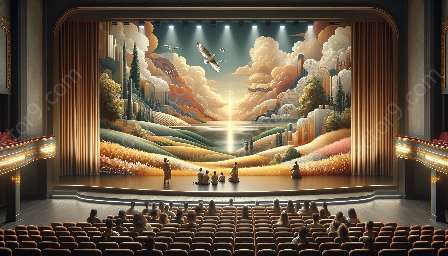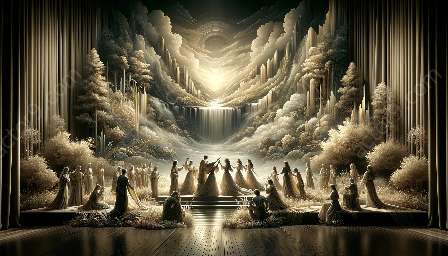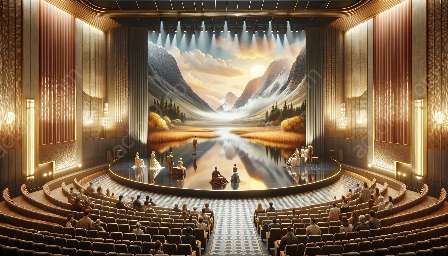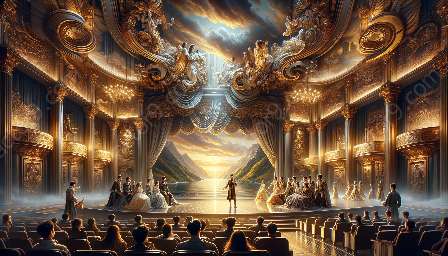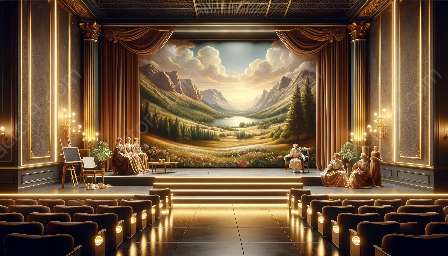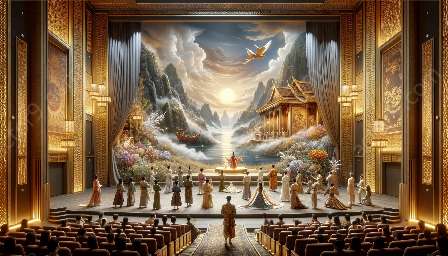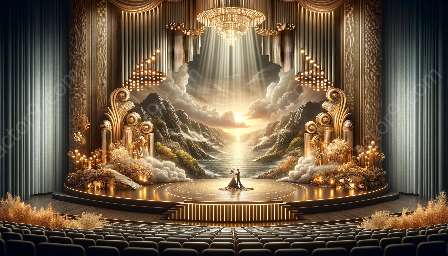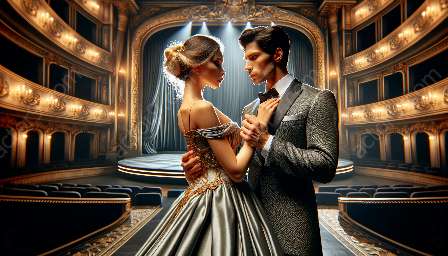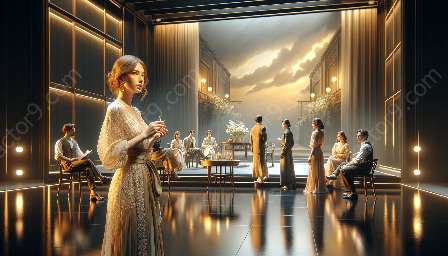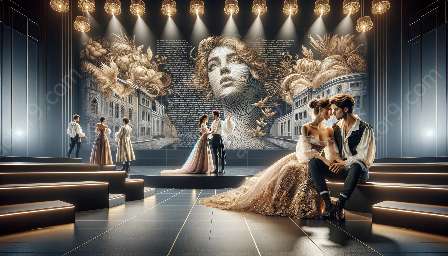Modern drama and theatre are dynamic forms of artistic expression that have evolved over time, reflecting the shifts in culture, technology, and human experience. From the historical roots of drama to the impact of modern productions on the performing arts, this comprehensive guide will take you on an insightful journey through the world of modern drama and theatre.
The Roots of Modern Drama
Modern drama traces its origins to the late 19th and early 20th centuries, a period marked by significant social, political, and artistic upheavals. The emergence of realism in the theatre, with playwrights like Henrik Ibsen and Anton Chekhov, led to a keen focus on contemporary life and social issues. This departure from the melodramatic and highly stylized forms of earlier drama paved the way for the exploration of psychological complexities and the portrayal of everyday characters and situations.
Simultaneously, avant-garde movements, such as Dadaism and Surrealism, challenged traditional theatrical conventions, pushing the boundaries of storytelling and performance. This era witnessed a redefinition of what could be considered art, fueling experimentation and innovation in theatre.
The Evolution of Acting
Acting in modern drama has evolved from a focus on theatricality and heightened emotion to a nuanced and multidimensional portrayal of characters. Method acting, developed by Constantin Stanislavski, revolutionized the approach to interpreting roles by emphasizing psychological realism and emotional authenticity. This technique continues to influence actors and directors, shaping the way characters are brought to life on stage and screen.
In addition, the integration of technology in performance has expanded the possibilities for expression, blurring the lines between physical and virtual realities. Motion capture, digital effects, and interactive media have opened new avenues for storytelling, challenging artists to navigate the intersection of live performance and digital innovation.
The Influence of Technology
Technology has become an integral part of modern theatre, offering new tools for set design, lighting, sound, and multimedia integration. Advancements in projection mapping, interactive installations, and virtual environments have redefined the spatial and sensory dimensions of the theatrical experience. With the rise of immersive theatre and site-specific performances, audiences are immersed in dynamic and interactive narratives, breaking away from the traditional confines of a proscenium stage.
Furthermore, digital platforms have transformed the dissemination of theatrical productions, enabling global audiences to access live-streamed performances and on-demand content. This accessibility has broadened the reach of theatre, transcending geographical boundaries and connecting diverse communities through the power of storytelling.
The Significance of Modern Productions
Modern productions in drama and theatre confront contemporary issues, provoke critical reflection, and spark conversations about the complex realities of the world we inhabit. Playwrights and theatre-makers delve into themes of identity, politics, gender, and social justice, using the stage as a space for dialogue and dissent. The intersection of diverse perspectives and experiences enriches the tapestry of modern theatre, fostering inclusivity and representation.
Moreover, the interplay between traditional and experimental forms of storytelling contributes to the continual redefinition of what constitutes modern theatre. Immersive experiences, devised works, and interdisciplinary collaborations challenge the boundaries of performance, inviting audiences to engage with narratives in innovative and thought-provoking ways.
In Conclusion
Modern drama and theatre continue to shape and be shaped by the ever-changing landscape of the performing arts. From its historical roots to the influence of technology and the significance of modern productions, this exploration celebrates the diversity and dynamism of contemporary theatrical expression. As audiences and artists alike embrace new forms of storytelling, the evolution of modern drama and theatre remains a captivating journey into the heart of human experience.
Topic
Key Characteristics of Modern Drama and Theater
View details
Influences of Modern Drama on Contemporary Theater Practices
View details
Impact of Technological Advancements on Modern Theater Production
View details
Challenges of Adapting Classic Works into Modern Theater Productions
View details
Evolution of Audience Reception of Modern Drama
View details
Differences Between Modern Drama and Traditional Theater Forms
View details
Addressing Social and Political Issues in Modern Playwriting
View details
Contributions of Women Playwrights to Modern Drama
View details
Representation of Mental Health and Psychological Themes in Modern Theater
View details
Impact of Modern Drama on Experimental Theater Practices
View details
Evolution of Space and Set Design in Modern Theater
View details
Ethical Considerations in Modern Theater Production
View details
Incorporation of Multimedia and Technology in Modern Theater Movements
View details
Interdisciplinary Collaboration in Modern Theater
View details
Reflection of Changing Societal Norms and Values in Modern Drama and Theater
View details
Connections between Modern Drama and Postmodern Theory
View details
Interpretation and Staging of Classic Plays by Modern Theater Directors
View details
Globalization's Influence on Modern Theater Practices
View details
Influence of Modern Drama on Contemporary Acting Techniques
View details
Challenging Traditional Gender Roles and Representations in Modern Theater
View details
Influences of Modern Drama on Popular Culture and Mass Media
View details
Use of Sound and Music in Modern Theater to Enhance Storytelling
View details
Ethical Issues Surrounding Cultural Appropriation in Modern Theater
View details
Addressing the Impact of Technology on Human Relationships in Modern Drama and Theater
View details
Trends in Modern Theater Funding and Financial Sustainability
View details
Impact of Historical Events and Traumas in Modern Drama
View details
Connections between Modern Drama and Contemporary Dance Forms
View details
Incorporation of Audience Participation and Interactive Elements in Modern Theater Productions
View details
Questions
What are the key characteristics of modern drama and theater?
View details
What are the significant movements in modern drama?
View details
How have technological advancements impacted modern theater production?
View details
What role does cultural diversity play in modern drama and theater?
View details
What are the challenges of adapting classic works into modern theater productions?
View details
How has the audience's reception of modern drama evolved over time?
View details
What are the differences between modern drama and traditional theater forms?
View details
How do modern playwrights address social and political issues in their works?
View details
What are the contributions of women playwrights to modern drama?
View details
How has modern theater addressed mental health and psychological themes?
View details
What impact has modern drama had on experimental theater practices?
View details
How has the use of space and set design evolved in modern theater?
View details
What are the ethical considerations in modern theater production?
View details
How do modern theater movements incorporate multimedia and technology?
View details
What are the challenges and benefits of interdisciplinary collaboration in modern theater?
View details
How do modern theater companies address environmental sustainability?
View details
What are the trends in modern theater audience engagement?
View details
How does modern drama and theater reflect the changing societal norms and values?
View details
What are the connections between modern drama and postmodern theory?
View details
How do modern theater directors approach interpretation and staging of classic plays?
View details
What are the implications of globalization on modern theater practices?
View details
What is the influence of modern drama on contemporary acting techniques?
View details
How does modern theater challenge traditional gender roles and representations?
View details
What are the influences of modern drama on popular culture and mass media?
View details
How do modern theater productions use sound and music to enhance storytelling?
View details
What are the ethical issues surrounding cultural appropriation in modern theater?
View details
How do modern drama and theater address the impact of technology on human relationships?
View details
What are the trends in modern theater funding and financial sustainability?
View details
How does modern drama address the impact of historical events and traumas?
View details
What are the connections between modern drama and contemporary dance forms?
View details
How do modern theater productions incorporate audience participation and interactive elements?
View details


